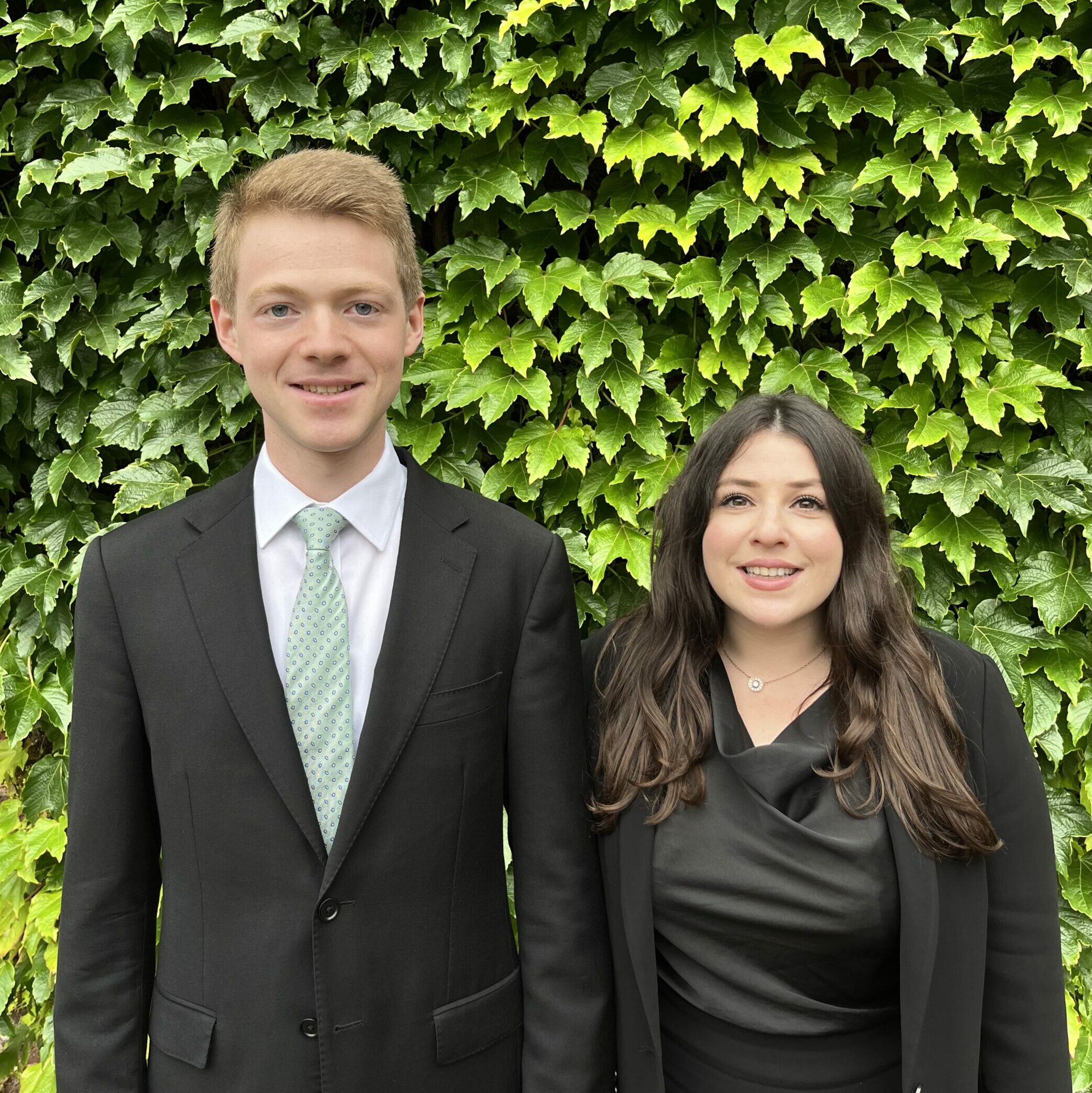

The Supreme Court has recently reconsidered the scope of duty or SAAMCO principle in two cases heard together by the same seven-Justice panel. The judgments are intended to be read together. This article seeks to summarise where, as professional advisers, we stand now.
Khan v Meadows1
A patient approaches her doctor to see whether she is a carrier of a hereditary disease, haemophilia. She does not want to have a child with that condition. The doctor arranges for certain blood tests to be carried out which merely establish whether the patient has haemophilia; she does not. What the doctor does not do, but should have done, is to refer the patient to a haematologist for a genetic test to determine whether she has the haemophilia gene. Several years later, the patient gives birth to a child who suffers not only from haemophilia but also autism. The haemophilia did not cause the autism or make it more likely. But it was reasonably foreseeable that, as a result of the advice given by the doctor, the patient could give birth to a child who suffered from autism as well as haemophilia, and the autism has made management of the child’s treatment for haemophilia more complicated.
These were the facts in Khan v Meadows. The doctor admitted negligence and liability for the additional costs associated with the child’s haemophilia. The question for the Supreme Court was whether the doctor was also liable in respect of the additional costs associated with the child’s autism, in respect of which the doctor denied responsibility. The Supreme Court unanimously decided that the doctor was not.
Manchester Building Society v Grant Thornton UK LLP2
At the same time, the same panel had to consider the extent of liability of an accountancy firm which in 2006 had advised its client, a building society, as to its ability to use the “hedge accounting” convention in drawing up its accounts, matching swaps with the society’s mortgage book, thereby reducing the appearance of volatility in its profits and greatly reducing the level of capital it would be required to maintain to meet regulatory capital requirements. The firm advised that the society could use hedge accounting, and subsequently repeated that advice. Relying on that advice, the society did not unwind existing swap agreements and entered into new ones as part of its business model.
As it transpired, however, the advice was wrong and negligently so. The society incurred losses when compelled to break the swaps early once the true accounting position was appreciated, in 2013. The firm denied liability for those losses on the basis that they were not caused by its negligence and/or that they were not losses from which the firm owed the society a duty to protect it. By the time the case reached the Supreme Court, the only head of claim still in issue was whether the firm was liable for the amount needed to close out the swaps in 2013. The Supreme Court decided, again unanimously, that the firm was liable.
The reasons why the Supreme Court reached the decisions it did were that the additional costs associated with the child’s autism in Khan did not fall within the scope of the doctor’s duty of care whereas the costs incurred by the society in closing out the swaps in Manchester Building Society did fall within the scope of the firm’s duty of care.
The Supreme Court took the opportunity when deciding both cases to clarify the approach to be adopted when determining the scope of duty and the extent of liability of professional advisers in the tort of negligence. Whether the case is one involving clinical negligence or auditors’ negligence or negligence in respect of advice given by any other professional, the approach will be the same.3
The scope of duty or SAAMCO principle: What is it?
Lord Hoffmann famously spoke4 of the mountaineer about to undertake a difficult climb. Being concerned about the fitness of his knee, he goes to a doctor. The doctor negligently pronounces the knee fit after a superficial inspection. The mountaineer goes on the expedition. He would not have done so if the doctor had told him the true state of his knee.
He suffers an injury which is an entirely foreseeable consequence of mountaineering; but it has nothing to do with his knee.
The doctor would be responsible for the consequences of his advice about the knee being wrong. But he would not be liable for the injury suffered by the mountaineer. That was a consequence of his going on the expedition and, as Lord Hoffmann explained, the mountaineer would have suffered it even if the advice that his knee was fit had been correct.
Lord Hoffmann gave this example to illustrate the scope of duty principle which applies to determine the professional adviser’s liability for negligent advice. It came to be known as the SAAMCO principle.
As Lord Reid said: “The ground of any action based on negligence is the concurrence of breach of duty and damage.”5 There must be a breach of duty owed to the claimant, but there can be no liability until the damage has been done. Lord Hoffmann again: “[A] claim in tort based on negligence is incomplete without proof of damage. Damage in this sense is an abstract concept of being worse off, physically or economically, so that compensation is an appropriate remedy.”6
It is necessary for the claimant to prove that his loss was factually caused by the adviser’s negligent advice. But the fact that the loss would not have occurred but for the negligent advice will not by itself suffice to establish liability. The mere fact that the mountaineer would not have gone on the expedition but for the doctor’s advice does not render him liable for the mountaineer’s injury which had nothing to do with the knee.
The claimant must prove that his loss was the reasonably foreseeable consequence of the advice. But this will not be enough to establish liability either. The fact that the injury was a reasonably foreseeable consequence of mountaineering was nothing to do with the doctor if it had nothing to do with the knee.
The crucial element that must be demonstrated in every case is that the damage suffered by the claimant falls within the scope of the adviser’s duty, being damage the adviser was obliged to take care to prevent. The adviser is not liable in damages in respect of losses of a kind which fall outside the scope of his duty of care. As Lord Hoffmann put it in his seminal judgment in SAAMCO: “[The claimant] must show that the duty was owed to him and that it was a duty in respect of the kind of loss which he has suffered.”7
This is the so-called scope of duty or SAAMCO principle. The principle was developed by the House of Lords in SAAMCO, Nykredit Mortgage Bank plc v Edward Erdman Group Ltd8 and Platform Home Loans Ltd v Oyston Shipways Ltd.9
But it did not miraculously appear in SAAMCO. As Viscount Simonds said some 35 years earlier in Overseas Tankship (UK) Ltd v Morts Dock and Engineering Co Ltd (The Wagon Mound):10
“It is, no doubt, proper when considering tortious liability for negligence to analyse its elements and to say the plaintiff must prove a duty owed to him by the defendant, a breach of that duty by the defendant, and consequent damage. But there can be no liability until the damage has been done. It is not the act but the consequences on which tortious liability is founded … It is vain to isolate the liability from its context and to say that B is or is not liable, and then to ask for what damage he is liable. For his liability is in respect of that damage and no other.” (emphasis added)
Or as Brennan J stated in Sutherland Shire Council v Heyman:11
“The question is always whether the defendant was under a duty to avoid or prevent [the damage suffered], but the actual nature of the damage suffered is relevant to the existence and extent of any duty to avoid or prevent it.”
And as Lord Bridge put it in Caparo Industries plc v Dickman:12
“It is never sufficient to ask simply whether A owes B a duty of care. It is always necessary to determine the scope of the duty by reference to the kind of damage from which A must take care to save B harmless.”
The Supreme Court has now re-affirmed this approach, and asks: “What, if any, risks of harm did the defendant owe a duty of care to protect the claimant against?” (Khan at [38]). In the case of negligent advice given by a professional adviser “one looks to see what risk the duty was supposed to guard against and then looks to see whether the loss suffered represented the fruition of that risk” (Manchester Building Society at [17]).
How is the scope of the duty determined?
Lord Hoffmann asked the question in SAAMCO and looked for guidance to Caparo, in which Lord Roskill stated (at 629B):
“I think that before the existence and scope of any liability can be determined, it is necessary first to determine for what purposes and in what circumstances the information in question is to be given.”
On the authority of Caparo, Lord Hoffmann himself was in no doubt that in the case of a statutory duty the question was to be answered by deducing the purpose of the duty from the language and context of the statute. In the case of tort, it would similarly depend upon the purpose of the rule imposing the duty: SAAMCO at 212C-D.
Thus, in Caparo itself, the purpose of the auditor’s report was to be ascertained by examining the relevant provisions of the companies’ legislation. As that purpose was limited to enabling shareholders to make informed decisions about the exercise of their rights under the constitution of the company, it followed that they owed no duty to non-shareholders (deciding whether to buy shares in the company), and that their responsibility to shareholders themselves did not extend to investment decisions (deciding whether to buy more shares).
SAAMCO was concerned with the scope of the valuer’s duty in the context of the negligent valuation of property for security purposes before the property crash in the early 1990s. In that context, the purpose of the valuation was to form part of the material on which the lender was to decide whether, and if so how much, he would lend. The valuation would tell the lender how much he was likely to recover, at current values, if forced to resort to his security. That being so, it would enable him to decide what margin (if any) would sufficiently allow for foreseeable valuation errors or a future fall in the market, accidental damage to the property and any other contingencies that might happen. The valuer would know that if he overestimated the value of the property, the lender’s margin for all these purposes would be correspondingly less.
But, as Lord Hoffmann explained, that did not mean that the valuer would be responsible for the lender’s decision to lend in its entirety.
There would be many factors of which the valuer would not be aware (including strength of the borrower’s covenant, attraction of the rate of interest and other personal or commercial considerations which might induce the lender to lend). That being so, the valuer was responsible only for the valuation being (negligently) wrong, rather than all the consequences of the lender’s decision to lend.
What was necessary in the valuers’ negligence cases, therefore, was to determine what loss was caused by the valuation being wrong. As Lord Hoffmann subsequently explained in Nykredit (at 1638), it was insufficient for the lender to prove that he was worse off than he would have been if he had not lent the money at all. What he had to do instead was to show that he was worse off as a lender than he would have been if the security had been worth what the valuer said it was worth, i.e. that his loss was attributable to the overvaluation. This gives rise to the so-called SAAMCO counterfactual, discussed further below.
So too in Hughes-Holland v BPE Solicitors,13 the solicitors’ instructions were to draw up the facility agreement and a charge, nothing more, the client having already agreed to lend £200,000 secured by a charge. They thereby took on responsibility for a particular task having a particular purpose. They performed that task negligently because they overlooked language in the letter, based on a template used in a previous abortive transaction, which confirmed the client’s mistaken understanding of the borrower’s building plans. But they did not assume responsibility for their client’s decision to lend money which was then lost. They were not asked to advise on the viability of the transaction. On the facts, none of the loss suffered by the lender was within the scope of the solicitors’ duty but arose instead from commercial misjudgments on the part of their client, which were no concern of theirs: see Lord Sumption’s speech at [54]-[55].
The Supreme Court has now confirmed that the scope of the duty of care assumed by a professional adviser is governed by the purpose of the duty, judged on an objective basis by reference to the reason why the advice is being given: Manchester Building Society at [13]-[17]; Khan at [41].
The scope of duty principle’s place in the tort of negligence
The majority made clear that the scope of the duty of care was to be determined by reference to its purpose and (together with Lord Burrows) distanced themselves from the causation-based analysis proposed by Lord Leggatt.
Going forward, the majority suggested that it may be helpful to analyse the place of the scope of duty principle in the tort of negligence by asking six questions in sequence:
- The actionability question: is the harm suffered actionable in negligence?
- The scope of duty question: what are the risks of harm to the claimant against which the law imposes on the defendant a duty of care?
- The breach question: did the defendant breach their duty by their act or omission?
- The factual causation question: is the loss for which the claimant seeks damages the consequence of the defendant’s act or omission?
- The duty nexus question: is there a sufficient nexus between a particular element of the harm for which the claimant seeks damages and the subject matter of the defendant’s duty of care as analysed at stage (2)?
- The legal responsibility question: is the particular element of the harm for which the claimant seeks damages irrecoverable because it is too remote, or because there is a different effective cause in relation to it or because the claimant has mitigated their loss or has failed to avoid loss they could reasonably have been expected to avoid?
That said, the majority emphasised that such analysis was neither exclusive nor comprehensive, and that it is quite possible to consider these matters in a different order and to address more than one question at the same time, noting that in many cases (2) and (5) can readily be analysed together: Khan at [28]-[29]. Space precludes detailed discussion of each question in this article. It will be interesting to see how helpful the suggested approach will be in practice.
The distinction between “information” and “advice” cases
In SAAMCO, Lord Hoffmann disapproved of the Court of Appeal’s distinction between “no-transaction” and “successful transaction” cases but drew his own distinction between “information” and “advice” cases.14
In the former, the adviser provides information for the purpose of enabling someone else to decide upon a course of action and must take reasonable care to ensure the information is correct. If he is negligent, he is responsible for the foreseeable consequences of the information being wrong.
In the latter, the adviser advises whether or not a course of action should be taken and must take reasonable care to consider all the potential consequences of that course of action. If he is negligent, he is responsible for all the foreseeable loss which is a consequence of that course of action having been taken.
The mere fact that the information provided by the adviser is known to be critical to the claimant’s decision whether to enter into a particular transaction or embark on a particular course of action, however, does not itself turn it into an “advice” case.
In Hughes-Holland,15 Lord Sumption noted that, while the last of these points was (and, it is suggested, remains) clear, the distinction between “Information” and “advice” had given rise to confusion “largely because of the descriptive inadequacy of these labels”, neither of which “really corresponds to the contents of the bottle”. They are neither distinct nor mutually exclusive categories. In reality, while some cases might be easily identifiable as being at one extreme or the other, most would fall within the spectrum in between and would depend on the range of matters for which the defendant assumed responsibility in the particular case and no more exact rule can be stated.16
In Manchester Building Society, the majority agreed with Lord Leggatt’s proposal ([92]) that the labels be dispensed with as terms of art. They considered that, rather than trying to “shoe-horn” a particular case into one or other of the categories, the focus should instead be on identifying the purpose to be served by the duty of care assumed by the defendant ([19]). In the context of the provision of advice or information, the court seeks to identify the purpose for which that advice or information was given (Khan at [41]).
It is suggested that Lord Leggatt’s formulation ([92]) is helpful in this context. He emphasised that the focus should be on “the need to identify with precision in any given case the matters on which the professional person has undertaken responsibility to advise and, in the light of those matters, the risks associated with the transaction which the adviser may fairly be taken to owe a duty of care to protect the client against”. He went on:
“What determines whether the adviser has a duty to protect the client against the full range of risks associated with a potential transaction, or only against some of those risks, is whether or not the adviser’s contribution to the decision-making process is limited.”
He emphasised (at [94]) that “whether … the defendant is liable for all foreseeable loss flowing from the transaction depends not on the gravity or causative potency of the defendant’s error or omission but on the scope of the matters for which the defendant undertook responsibility”.
The SAAMCO counter-factual
The majority distinguished between the SAAMCO principle and the SAAMCO counterfactual: Khan at [36]. The latter they identified (at [53]) as the mechanism or analytical tool by which the duty nexus question (5) is addressed in the valuers’ negligence cases, namely by asking the counterfactual question: What would the claimant’s loss have been if the information which the defendant in fact gave had been correct?
As they explained, the question is not whether the claimant would have behaved differently if the advice provided by the defendant had been correct. Rather it assumes that the claimant would behave as he did in fact behave and asks whether, if the advice had been correct, the claimant’s actions would have resulted in the same loss. That enables the court to ascertain the loss which is properly attributable to the information being wrong.
So explained, the SAAMCO counterfactual is recognised as an appropriate and useful tool in some cases (as in valuers’ negligence cases), but perhaps less so in others. The message seems to be that, as such, it should not be assumed that it will be appropriate in every case but that, where it is appropriate, it is not to be criticised merely on account of its imprecision (Khan at [54]).
The scope of duty principle in action
Just as the doctor was not liable for the mountaineer’s injury so, in the more distressing circumstances in Khan v Meadows, the doctor was not liable for the additional costs associated with the child’s autism. That was notwithstanding the fact that the patient would not have had the child but for the doctor’s negligent advice, and that the possibility of the child being born with a disability such as autism was a reasonably foreseeable consequence. The doctor was not liable because the purpose of the patient’s visit, and the doctor’s advice, was to see whether she was a carrier of the haemophilia gene so as to enable her to make an informed decision in respect of any child which she conceived who was subsequently discovered to be carrying the haemophilia gene. The visit was thus concerned with a specific risk, namely the risk of haemophilia; not the risk of autism. Even if the doctor’s advice had been right and the patient had not been a carrier of the haemophilia gene, the child would still have been born with autism. The risk of autism, therefore, was not within the scope of the doctor’s duty of care.
Conversely, in Manchester Building Society, the firm was liable for the society’s loss because the purpose of its advice was to deal with the issue of hedge accounting in the context of its implications for the society’s regulatory capital, and the resulting loss thus fell within the scope of its duty of care. As the majority explained at [38], use of hedge accounting allowed the society to make the assessment that, in terms of the constraints imposed by regulatory capital requirements to which it was subject, it had the capacity to proceed with the business of matching swaps and mortgages whereas otherwise it did not. That was the commercial reason why the society sought the advice, and why the advice was fundamental to the society’s decision to engage in that business, as the firm knew. However, the society’s damages were reduced by 50% reflecting its own contributory negligence in mismatching the mortgages and swaps in what was found to be an overly ambitious application of the business model by the society’s management.
1 [2021] UKSC 21.
2 [2021] UKSC 20.
3 While unanimous as to the results, the majority (Lords Hodge and Sales, with whom Lord Reed, Lady Black and Lord Kitchin agreed) considered that their approach to the scope of duty principle differed from that of Lords Leggatt and This article is concerned primarily with the approach of the majority. It does not attempt to analyse the differences of approach, real or apparent, favoured by Lord Leggatt or Lord Burrows.
4 Banque Bruxelles SA v Eagle Star [1997] AC 191, commonly known as South Australia Asset Management Corpn v York Montague Ltd, or SAAMCO.
5 Watson v Fram Reinforced Concrete Co (Scotland) Ltd (1960) SC HL 92, at 109.
6 Rothwell v Chemical & Insulating Co Ltd [2007] UKHL 39; [2008] AC
7 [1997] AC 191, at 211H.
8 [1997] 1 WLR 1627
9 [2000] 2 AC 190
10 [1961] AC 388
11 (1985) 157 CLR 424, 487
12 [1990] 2 AC 605
13 [2018] AC 599.
14 [1997] AC 191, at 214E-F.
15 [2018] AC 599 at [39].
16 [2018] AC 599 at [44].





![Brake & Anor v The Chedington Court Estate Ltd [2023] UKSC 29](https://southsquare.com/wp-content/uploads/2024/02/Brake-Anor-1-scaled.jpeg)










